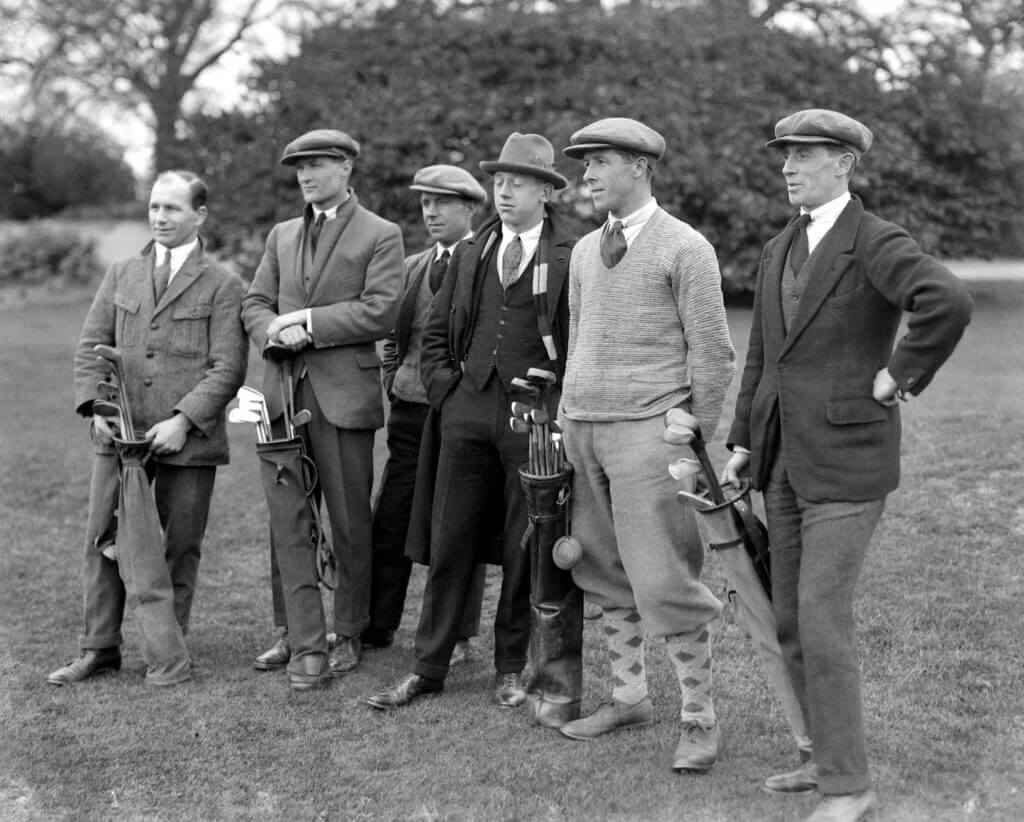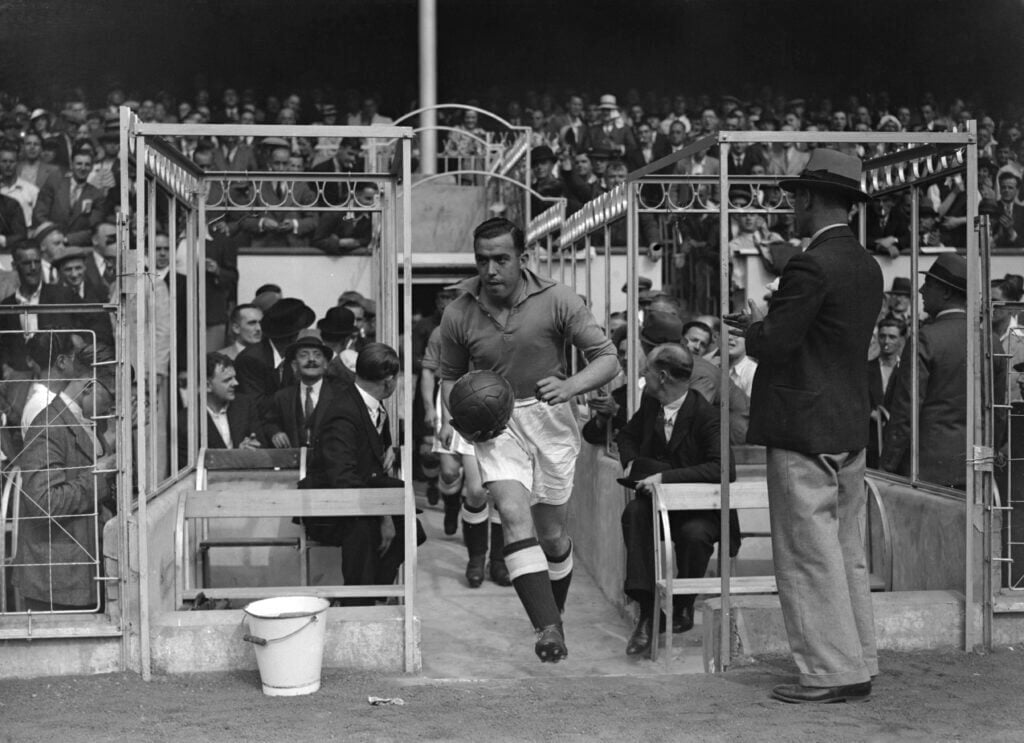Erling Haaland wants to score three goals in a succession, but how uncommon is that?

Erling Haaland will try to accomplish something that hasn’t been accomplished since 1946 on Saturday against Brentford.
The Manchester City striker will join an extremely select group of players if he can score another hat-trick against Thomas Frank’s team this weekend at the Etihad Stadium. He has already scored hat-tricks in his last two Premier League appearances.
There are only four instances in English top flight history where a player scores three goals in three straight games; three of those instances occurred prior to 1930.
The memories of those four events are told here by The Athletic, along with the guys that the 24-year-old Norway international aspires to be like.
Frank Osborne, for Tottenham Hotspur in 1925
Opponents: Liverpool, Leicester City, West Ham United
Osborne, the center-forward for Tottenham, participated in 26 matches across all competitions during the 1924–25 campaign. and failed to score any goals.
The offside rule was modified that summer, lowering the requirement from three to two opposing players in front of the attacker for them to be onside.
As could be expected, this resulted in games with higher scoring totals and more opportunities for Osborne and the other forwards (the English top flight’s goals-per-game rate increased from 2.58 to 3.69 in 1925–26).
In his debut game of that 1925–26 season, the England international (three caps and zero goals at the time) scored twice away against Sheffield United. Before Liverpool’s October 24 visit to White Hart Lane, where the 29-year-old scored a hat-trick as Tottenham defeated Liverpool 3-1, he scored three more goals in his following ten games.
Osborne, who was born close to Cape Town in what is now South Africa, scored three more goals away against Leicester in their subsequent meeting one week later.
That was the only time a player’s hat-trick occurred in a loss on this list as Tottenham lost that match 5-3.
The next Saturday, November 7, Tottenham defeated West Ham 4-2 at home, making Osborne the first player in the history of the English top flight to score a hat-trick in three straight games.

As part of his treble of trebles, Osborne is the only one of these four players who did not score four goals in at least one of the relevant games. He is also the only one who did not complete a hat-trick against Arsenal.
He scored just one more top-flight hat-trick in his career, against Newcastle in January 1928 (four goals), and was unsuccessful in Tottenham’s subsequent league matchup against Newcastle United.
Osborne did, however, win an international recall due to his stellar performance in 1925–26, as he ended the season with 25 goals in 39 league appearances. In May, he also scored a hat-trick against Belgium. Since the First World War, it was the first time an England player has scored three goals in a single game.
Tom Jennings, for Leeds United in 1926
Opponents: Arsenal, Liverpool, Blackburn Rovers
Scotsman Jennings moved Leeds from 16th to seventh place in the early fall of the 1926–27 season with three consecutive hat-tricks.
The forward came to play for the Yorkshire club in 1925 after leaving Scottish team Raith Rovers.
In his first full season (1925–26), he participated in every league game and scored 26 goals.
The twenty-four-year-old scored three goals in his first seven league games of the 1926–1927 season.
On September 25, he scored three more goals against visiting Arsenal, as Leeds won 4–1. On October 2, under the direction of manager Arthur Fairclough, they went to Anfield, where Jennings scored four goals—two in each half—to assist his team defeat Liverpool 4-2.
A week later, Leeds defeated Blackburn Rovers 4-1 at Elland Road thanks to another four goals from Jennings.
Jennings scored twice in Leeds’ subsequent league match, an away loss to Leicester, but he was unable to make it four goals in a row as they lost 3-2.
This is still the closest anyone has ever gone in the English premier league to scoring four straight hat-tricks. Jennings scored 37 goals in all competitions (35 in the league) before the end of that season.
Only twice in Leeds’ history has this total been surpassed, and that was by John Charles (43 in 1953–54 and 39 in 1956–57), but Leeds was in the Second Division for the first of those seasons.
Jennings’ three hat-tricks put a stop to the team’s successful run, though, as Fairclough’s team lost six of their final 32 league games and was demoted.
Dixie Dean, for Everton in 1928
Opponents: Burnley, Arsenal, Bolton Wanderers

Possibly the most prolific goal scorer in English football history, Dean scored sixty goals for Everton in the 1927–28 First Division. Not even one other player in English top flight history has scored 50 goals in a season.
Even though he didn’t turn 21 until January of that year, Dean participated in 39 league games for Everton and scored in 29 of them. His seven hat-tricks helped the team win the championship for the first time in thirteen years.
In the last two games of the season, he scored seven goals, four at Burnley on April 28 in a 5-3 victory and three at home against Arsenal a week later in a 3-3 draw, to reach the 60-goal milestone. This indicated that he had consecutive hat-tricks at the end of the campaign.
Afterwards, on the first day of the 1928–1929 season, Everton defeated Bolton Wanderers 3-2 on the road. Dean scored the first three goals to complete a hat-trick of hat-tricks.
In Everton’s subsequent game, the England international was unable to score against The Wednesday (now Sheffield Wednesday, who would go on to win the title).
Out of the four times that a three-peat hat-trick has occurred over two seasons, this is the only one. In all, Dean set a record with 30 hat-tricks in the premier English football league.
Haaland currently has eight, thus 23 more are needed to reach this number. During his 362 appearances in the top tier in England, Dean averaged a hat-trick per 12.1 games; currently, the Norwegian is averaging one every 8.6 matches (eight in 69 games).
Jack Balmer, for Liverpool in 1946
Opponents: Portsmouth, Derby County, Arsenal
The English League’s top division was made up of the same 22 clubs that had participated in the 1939–40 season, which was abandoned after each team had played three games.
The 1946–47 season was the first to be finished since the start of World War II. With the help of attackers Balmer and Albert Stubbins, who each scored 24 goals in the league, Liverpool went on to win the championship for the first time in 24 years. Ten of Balmer’s twenty-four (42%) came in three straight November games.
The 30-year-old Balmer, who is the oldest player on this list, scored all three goals in a 3-0 victory against Portsmouth at Anfield on November 9. A week later, he scored four goals in 17 minutes away at Derby, helping George Kay’s team win 4-1.
Then, on November 23 in a 4-2 home victory over Arsenal, Balmer scored his third straight hat-trick, an achievement that hasn’t been matched in nearly 78 years.
His record declined after that, and from December 25 to the conclusion of the season, he scored just four goals in 19 league games (having registered 20 in 20 prior to that day).
He did score once in the following away game against Blackpool and another four goals before Christmas.
YOU MAY ALSO LIKE:Trump has his first news briefing since his debate with Harris.
Balmer played for Liverpool from 1935 to 1952, making over 300 appearances; these three hat-tricks were all that he ever scored.
Haaland has prior experience in this role. He scored back-to-back hat-tricks at home against Nottingham Forest and Crystal Palace near the beginning of the 2022–23 Premier League season, his first with City.
However, he was only able to hit the net once in their next game, which was away against Aston Villa. Although Haland has scored 17 goals in his 13 league games at the Etihad at that kickoff time, it is quite possible that he will play with Osborne, Jennings, Dean, and Balmer when City takes on Brentford at home on Saturday at 3pm.
That would be an incredible accomplishment that is very unlikely to happen again in the near future. Erling, it’s your turn.
1 thought on “Erling Haaland wants to score three goals in a succession, but how uncommon is that?”
Comments are closed.